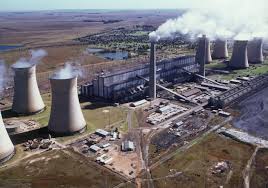
Eskom has announced that stage two load shedding will continue into the weekend to allow the power utility to recover from a series of breakdowns that severely impacted generation capacity.
This after the power utility announced on Monday that it would implement load shedding until Wednesday morning.
Eskom Chief Operations Officer, Jan Oberholzer, said since yesterday, at least four units had been placed back in service with a further two going offline.
“An additional three units… are expected to return to service by the weekend... Due to the unpredictability and unreliability of the generators, and to prevent the need for any higher stage of load shedding, we unfortunately have to inform the public that we have to continue with stage two load shedding up until 5am on Saturday morning.
“We really do apologise for the very difficult situation that we are placing the people of South Africa in and the negative impact that we fully understand that we have on the country,” Oberholzer said.
Eskom Generation Group Executive, Phillip Dukashe, explained that ageing infrastructure and deferred maintenance took its toll over the weekend, which led to the power utility losing critical power generating units.
“Because of the age of our plants, we are doing maintenance and in many cases, some of these units have had their fair share of maintenance. However… at this stage, we have not really succeeded in predicting and working on all the components that we need to work on. So we are catching up on some maintenance but some of these failures are coming from areas that have not been worked on.
“We are still dealing with a backlog in maintenance. That backlog is going to take quite some time to work through because some of these issues require the unit to be off for three months or even longer. We require to plan for that and also we need to buy spares upfront for those,” he said.
Dukashe said the power utility is running ageing generating units “at risk” because of the constrained power system.
The units at risk carry at least 8 700MW of energy but can be run on a partial load loss basis.
“We know about the risk but we are looking for a time where we can fit that unit without impacting the ability to supply electricity. So that balancing act sometimes lands us in trouble because what then happens is exactly what happened yesterday, where some of those risks [get realised] at the same time and they hit when we can least afford it,” Dukashe said.
He said additional capacity of at least 4 000MW is “desperately needed” in order to have a more reliable system.
“Without that, it will be impossible to say that we’re going to have a reliable system. We’re running with 8 700MW of risk on our system. The right thing to do would be to shut down those units, and do maintenance so that we can have more reliable units. But we can’t because we know if we shut them down, we’re going to even increase the stage of load shedding,” Dukashe said.
Russia-Ukraine conflict
Oberholzer said the current conflict between Russia and the Ukraine is driving up coal prices up.
However, he said, the immediate impact on the power utility – which is reliant on coal powered stations – is not yet known.
“We are cognizant of the fact that prices are escalating quite rapidly. We are quantifying and looking at exactly what the most likely impact will be. [We cannot] quantify it right now... But we are really concerned [about the impact] of… [any] war will have on our operations in South Africa,” Oberholzer said.
Eskom’s Chief Nuclear Officer, Riedewaan Bakardien, said the power utility does not have any direct suppliers from the two countries.
“However, some of our supply chain or sub-suppliers… likely have some supplies coming from Russia, so we are evaluating if there is anything there that may impact [us] going forward. Up to , we have not seen any impact,” he said. – SAnews.gov.za


